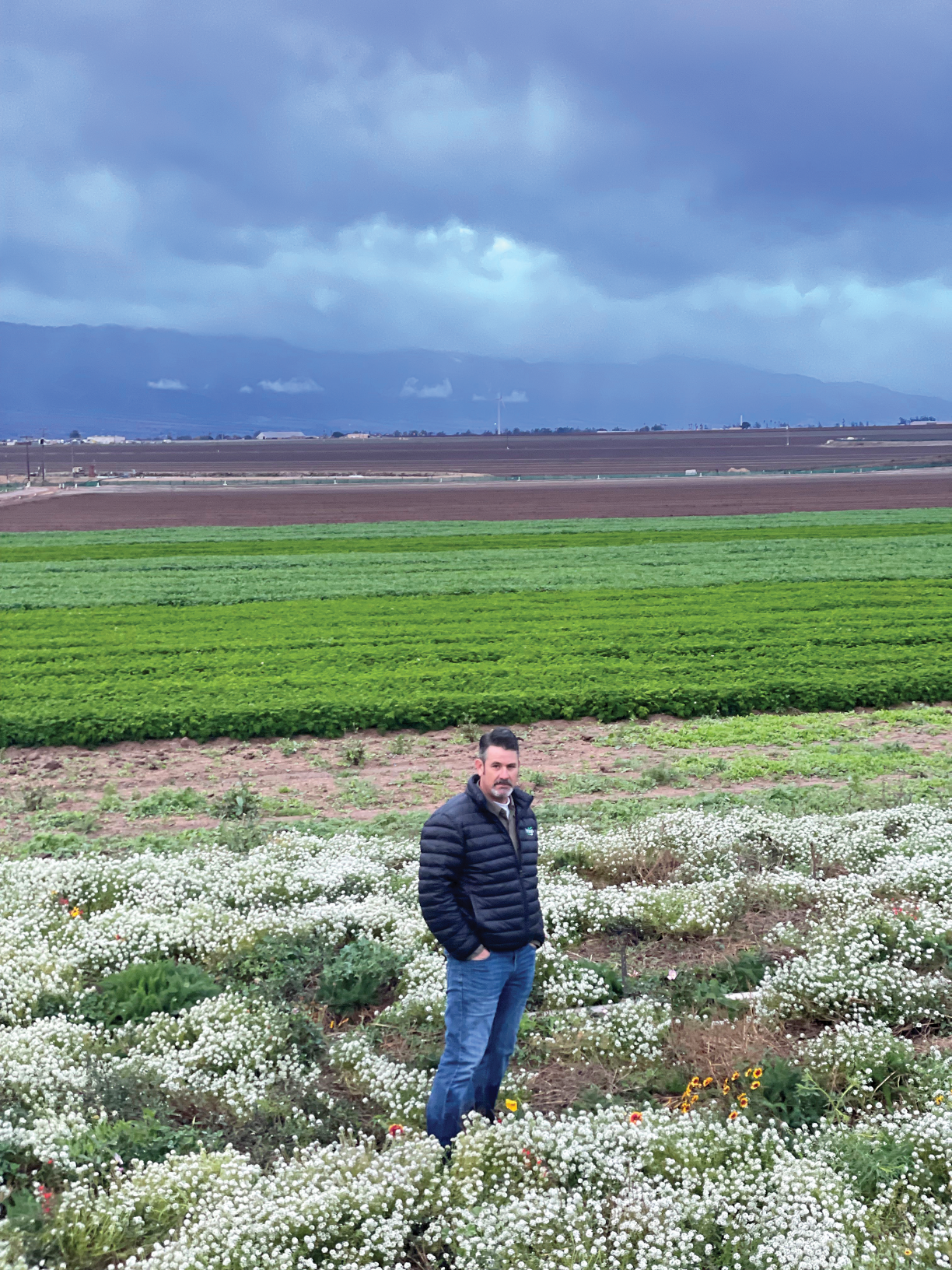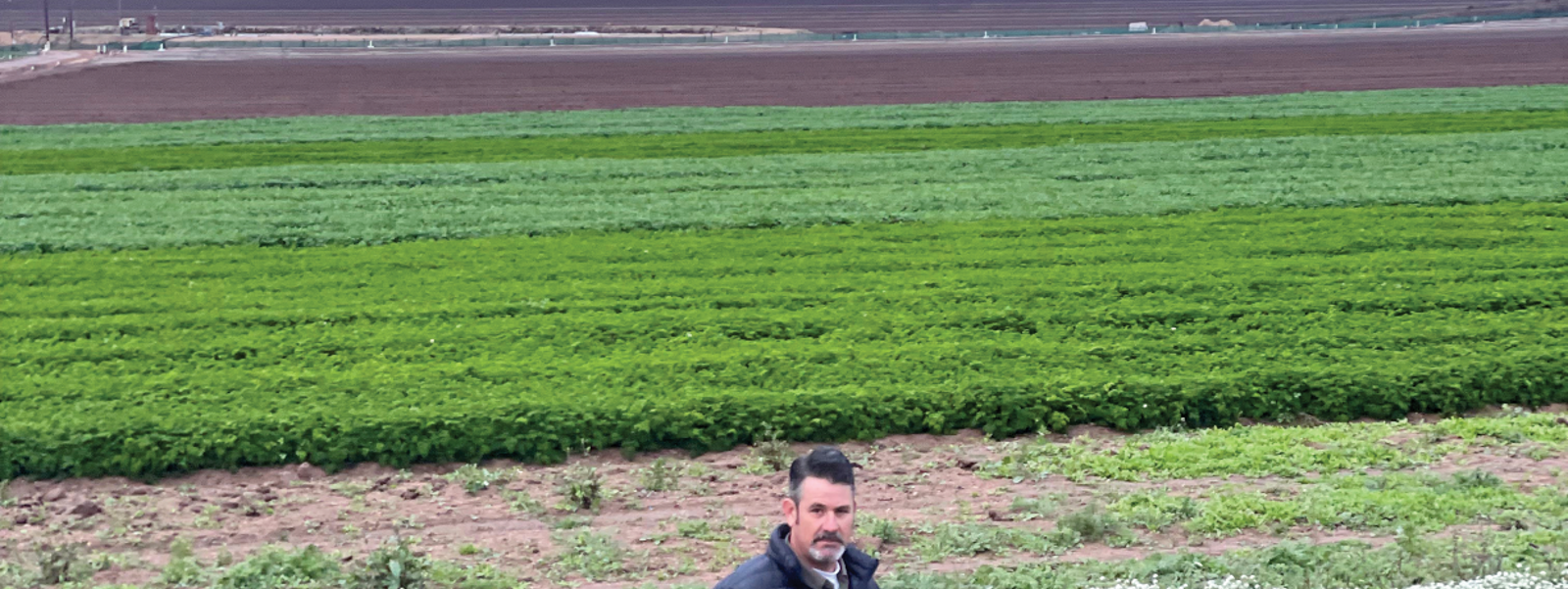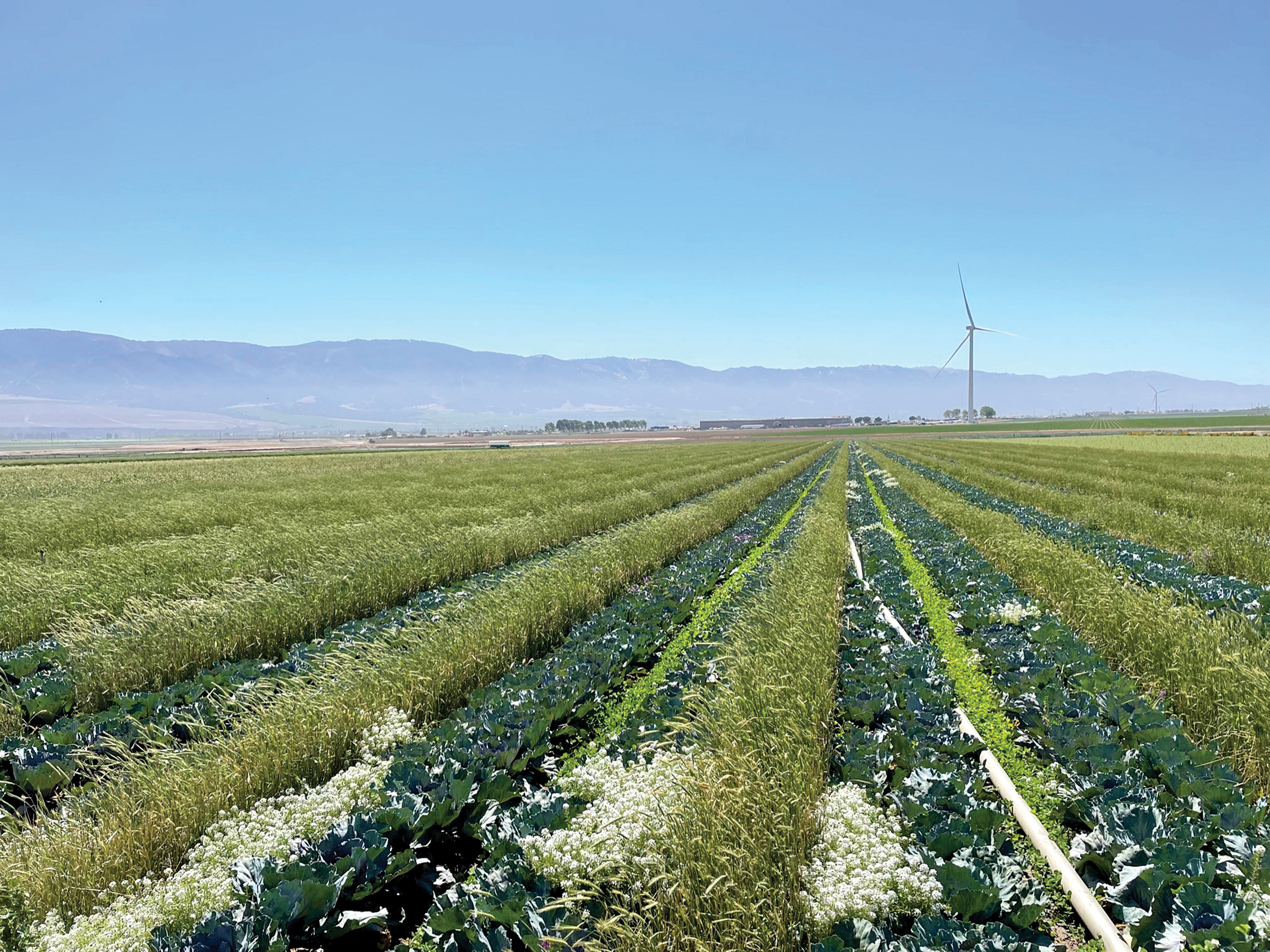Grower credits cover crops for curbing toll of storms

Eric Morgan, vice president of environmental science and resources for Braga Fresh, says cover crops in its fields reduced flooding impacts and helped speed planting after heavy rains.
Photo/Courtesy Braga Fresh


Photo/Courtesy Braga Fresh
By Caitlin Fillmore
Small investments in regenerative agriculture are showing early results for a Central Coast organic grower. Researchers say the approach shows the resiliency of a traditional farming philosophy amid a challenging growing season.
Eric Morgan, vice president of environmental science and resources for Braga Fresh, said the firm endured widespread flooding from this year’s atmospheric river storms in California.
But the nearly 100-year old farming operation, which grows produce on 20,000 acres in the Central Coast and near Yuma, Arizona, reports a robust growing season. It credits its use of cover crops and other regenerative agricultural practices.
“We had our nicest field of organic cauliflower harvest in March after 30 inches of rain, which is bizarre,” Morgan said, referring to storms that drenched its California fields.
Braga grows vegetables, including lettuces, broccoli and cabbages, and it markets a value-added line of salad kits and veggie trays. About 70% of Braga Fresh crops are organic. The company employs cover crops on one-third of its California land, Morgan said. He credits the cover crops with reducing flooding impacts.
“If we would have had (an additional) one-third of our fields running water off, it would have been one-third more problems to clean up,” Morgan said. “It was fully taxing to us as it was.”
He noted that after the storms, acreage with cover crops was in better shape for planting, even after the time required to terminate cover crops on large parcels. Once planting was able to begin, cover-cropped beds had a two-week head start over other acreage impacted by heavy rains, Morgan said.
“What we found was where we had the cover crop planted in the beds, where vegetation was present, we were able to resume tractor work two weeks sooner than bare beds and tillage,” Morgan added.
Tim LaSalle, co-founder of the Center for Regenerative Agriculture and Resilient Systems at California State University, said the basics of regenerative agriculture lie in building soil life and fungal dominance as rapidly as possible to create a thriving natural ecosystem that can adequately regulate itself.
“This is the wisdom of nature we are learning to support and get robust agricultural yields and increase profits for the farmer,” LaSalle said. “The beauty is it creates a profit margin for the farmer that they are in control of because they need fewer input costs.”
Morgan estimates Braga Fresh saved $500,000 by going with alternative tillage techniques, especially as it nurtures the first year of a 500-acre tomato commitment with Morningstar Farms.
The tomatoes are grown in a multi-layered regenerative agriculture strategy, using in-bed tilling and a Merced rye cover crop, capable of establishing an 8-foot root system in 90 days.
These choices reduced fall groundwork from 35 passes to nine. Morgan estimates the company saves 150 acre-feet of water by removing 10 hours of running irrigation drip tape and contributing 75% less carbon dioxide in the atmosphere by using smaller tractors less often.
While this first-year experiment is still underway and total yield is yet unknown, Morgan said he feels encouraged by this “large-scale tomato experiment.”
“Our focus is on how we can do better in an environment where laws are changing, availability of chemical inputs is changing, and agriculture is having its finger pointed at it for greenhouse gas emissions,” Morgan said. “The mindset is to solve the problem, not fight against the problem.”
However, Morgan also acknowledged there is a long way to go with widespread adoption of regenerative agricultural techniques. These efforts at Braga Fresh represent less than 1% of overall production, Morgan said. A U.S. Department of Agriculture study from 2017 estimated less than 5% of vegetable production land used cover crops in the Salinas Valley.
“Regenerative agriculture has yet to demonstrate that it is an economic proposition,” said Ronnie Lipschutz, president of the Sustainable Systems Research Foundation, a regenerative agriculture think tank and project incubator in Santa Cruz. “I don’t think we’re at the point yet where there are enough successful farms that discuss the economics. What does it cost? What does it save?”
Lipschutz said there is “no question” the main principles of regenerative agriculture, including reducing tilling, using cover crops and promoting biodiversity, are beneficial. But he said the benefits can be “difficult to impossible to monetize.”
He said regenerative agriculture “is not part of conventional wisdom yet,” adding, “Conventional wisdom arises from successful practices.”
A willingness to gamble with regenerative agriculture may be the next step, and Morgan said he expects additional producers to move in that direction.
“Farming with an ecological basis is not just for people who can afford a CSA,” Morgan said, referring to Community-Supported Agriculture operations, in which consumers directly support farmers with advance purchases of produce. “We need to do better than that locally, in California, nationally and internationally.”
LaSalle of Chico State works with farmers each year from across the agricultural spectrum on how to implement ecologically friendly strategies. This year, 80 farmers of permanent crops, annual crops and livestock are students of LaSalle’s through the Center for Regenerative Agriculture and Resilient Systems.
“It is a movement, and it is a farmer-led movement,” LaSalle said. “In my humble opinion, it’s the only future we have and the only opportunity.”
(Caitlin Fillmore is a reporter in Monterey County. She may be contacted at cslhfillmore@gmail.com.)




